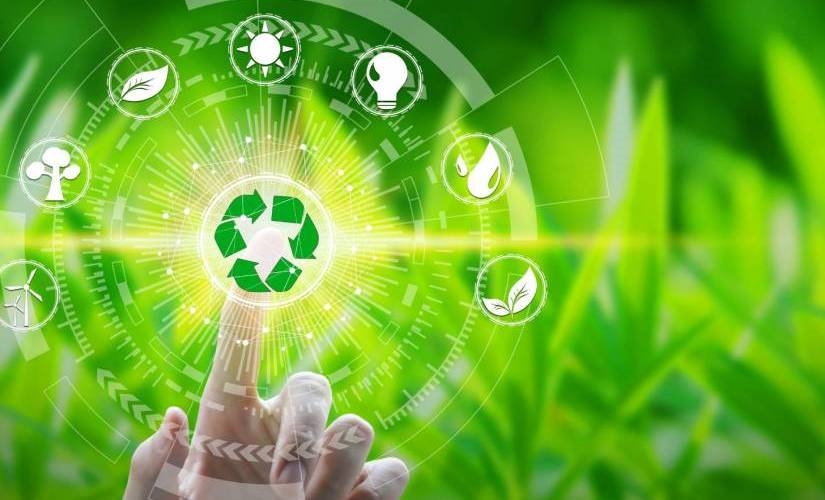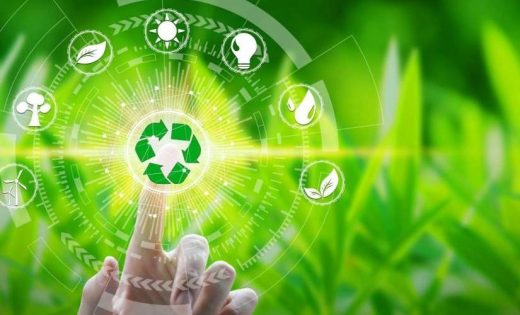How AI Can Save the Planet
How AI Can Save the Planet

Every day, artificial intelligence opens up amazing opportunities all over the world. Today, artificial intelligence technology is being implemented in companies to improve decision making, business processes and obtain valuable insights.
Technology has a significant impact on the goals of sustainable development.
Artificial Intelligence has great potential to save our planet: detecting energy emission reductions, optimizing energy production, monitoring deforestation, predicting extreme weather conditions, cleaning oceans and protecting inhabitants, and much more.
In this article, we will take a closer look at some AI solutions that save our planet. Also, you can find examples of AI startups, which effectively invested in AI technology for saving the planet.
AI solutions that save our planet
Cleaning and protecting oceans
71% of our planet is the ocean. But the earth is drowning in plastic pollution. According to the UN Environment Programme (UNEP), 300 million tonnes of plastic are produced every year, and not all is recycled. [1]
Moreover, a report by the Ellen MacArthur Foundation in partnership with the World Economic Forum predicts that by 2050, the oceans will contain at least 937 million tons of plastic and only 895 million tons of fish. [2]
And there are a lot of other such shocking facts.
So, the first implementation of AI technology is cleaning and protecting oceans from plastic. Have you ever wondered how AI can help to clean oceans?
Robotic system for sorting plastic
In 2020 researchers from the University of Buffalo developed a robotic system based on machine learning that allows sorting plastics and discovering ecologically friendly solvents and new chemicals that decompose plastics into reusable components.
The robotic system includes sensor technology and a machine learning model. Sensor technology records the molecular signature of each piece of plastic, and machine learning identifies a specific piece of plastic based on molecular signatures.
Automated robot for detecting plastic in rough waters
The company Razer and startup CleanBot recently announced the development of a fully autonomous robot equipped with artificial intelligence and machine learning technologies that can detect marine plastic within two meters in rough waters. Powered by solar energy, the robot can collect up to 250 kg of plastic in just one cycle.
“ClearBot’s unique AI and advanced machine learning technology will enable and empower governments and organizations around the world to broaden their sustainability efforts.” – Patricia Liu, chief of staff at Razer
AI-powered robots improve the recycling process
Recycling is a $ 200 billion industry, according to the Bureau of International Recycling. In most countries, recycling is considered a public matter and not a personal responsibility. Did you know that only 9% of all plastics are recycled? The rest usually end up in the oceans. Let’s take a closer look at some facts about recycling. [3]
- On November 17th, 2020, at the America Recycles Summit — the Director of the EPA announced the goal to increase the national recycling rate to 50% by 2030.
- It’s estimated that 94% of Americans support recycling.
- Germany has the highest MSW recycling rate in the world.
AMP Robotics
The company produces AI robots that automate the identification, sorting, and processing of the countless items that are collected for recycling – at speeds twice as fast as humans and with 99% accuracy.
AMP Robotics operates in the United States, Canada, Japan, and Europe, integrating its technology with existing equipment to minimize the need for significant infrastructure changes.
ZenRobotics
ZenRobotics Recycler is a waste sorting system that separates raw materials from waste. The system is equipped with infrared sensors, a 3D sensor system, an RGB camera, and a metal detector for waste identification.
The recycling system allows the recovery of valuable raw materials from construction waste. The artificial intelligence system is sold worldwide through a network of resellers in 49 countries.
AI in reducing supermarket food waste
Food waste is another growing problem worldwide, and while waste occurs at all stages of the process (from production to consumption), consumers currently generate the most waste.
For example, in Germany, about twelve million tonnes of food are thrown away each year. And in the United States, nearly 40 million tons — 80 billion pounds — every year! [4]
Therefore, AI technology also plays a significant role in this global problem.
A report from the Ellen MacArthur Foundation and Google estimates that technologies employing AI to “design out food waste” could help generate up to $ 127 billion a year by 2030. [5]
So, how can AI technology be implemented in supermarkets for reducing food waste?
Winnow Vision
AI platform, Winnow Vision identifies and weighs food waste thrown into AI-powered bins in commercial kitchens. This platform can correctly identify unnecessary products in over 80% of cases.
The startup also established cooperation with the Swedish company IKEA, which installed Winnow Vision in all 23 stores in Great Britain and Ireland.
What’s next?
According to PWc research, it estimates that artificial intelligence for environmental applications could contribute $ 5.2 trillion to the global economy in 2030, which is 4.4% more than before. [6]
“AI can enable our future systems to be more productive for the economy and for nature” – Celine Herweijer, Global Innovation and Sustainability Leader, PwC UK.
In the near future, artificial intelligence can make energy markets much more efficient – by unlocking new supplies, reducing transaction costs, and making it easier for users to identify what they want to buy in the market. Moreover, it is predicted to see such AI solutions as:
- AI-designed intelligent, connected, and livable cities
- A transparent digital Earth
- Reinforcement learning for Earth sciences breakthroughs and more
Key Takeaways
- Artificial Intelligence has great potential to save our planet: detecting energy emission reductions, optimizing energy production, monitoring deforestation, predicting extreme weather conditions, cleaning oceans and protecting inhabitants, and much more.
- Examples of AI solutions: a robotic system for sorting plastic, AI-powered robots for improving the recycling process, AI-powered bins for reducing supermarket food waste, and more.
- Artificial Intelligence plays a vital role in achieving not only environmental but all other sustainability goals.
References
[1]Unep.org. Our planet is drowning in plastic pollution.
[2] Weforum.org. The New Plastics Economy Rethinking the future of plastics.
[3] Petpedia.co. 41 Eye-Opening Recycling Statistics for 2021.
[4] Rts.com. Food Waste in America in 2021.
[5] Ellenmacarthurfoundation.org. Let’s build a circular economy.
[6] Pwc.co.uk. How AI can enable a sustainable future.
[7] Weforum.org. 8 ways AI can help save the planet.
Image Credit:Pprojekt Bez Tytulu; provided by the author
The post How AI Can Save the Planet appeared first on ReadWrite.
(94)


